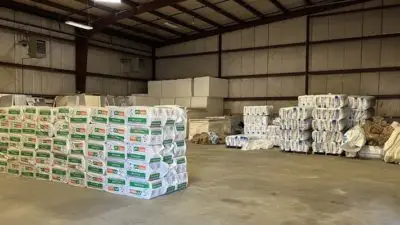Get your home tested for dangerous carbon monoxide levels with a no-cost home energy assessment.
Need to know: CO Levels in Your Home
We all have appliances like gas stoves, furnaces, and water heaters, fuel-burning appliances that produce carbon monoxide. If these appliances are out-of-date or not working properly, they can over-produce CO (carbon monoxide). Motor vehicles also produce CO, so homes with an attached garage are at risk of higher CO levels.
When too much CO is in the air you breathe, especially for a prolonged period of time, it can lead to carbon monoxide poisoning and even death.
Keep your family safe. There are approximately 500 CO deaths per year (add location), with another 8,000 to 15,000 people hospitalized for CO poisoning. Because carbon monoxide has no odor, color or taste, there’s no way to know if you have high levels of CO in your home without a CO detector.
Prevention is Key
It’s important to have a CO detector, but more importantly, it must be properly placed. If it’s located in the most well-ventilated room in your home, it won’t give you an accurate overall reading. Since your fuel-burning appliances can put you at risk, it’s recommended that they are checked once a year. This service is one of the great benefits of a Mass Save® No-Cost Home Energy Assessment.
HomeWorks Energy Keeps Communities Safe
HomeWorks Energy made a home visit to a 1989 ranch-style home in Haverhill. As we performed our assessment, we noticed the home had a Burnham natural gas boiler installed in the basement, which was covered with dust and rust under the draft hood. In a smaller room were other fuel-burning appliances: a boiler, water heater, and dryer. Just a few feet away was a basement bedroom the home’s residents planned to use more often.
The residents had a CO detector, but it wasn’t picking up the accurate CO levels for the entire house because it was in a well-ventilated room where air was recycling much more quickly than the room with fuel-burning appliances. A CO test revealed the upper level of the house had a CO level of 25ppm, and the basement, where the bedroom the residents wanted to use more was located, had a CO level of 38ppm. The maximum recommended indoor federal standard is 9ppm, ppm (meaning “parts per million.”) PPM is a system used to measure how concentrated the CO is in a particular area. Higher concentrations, along with long-term exposure, can result in possible health effects. If the home’s residents had spent more time in the basement bedroom as planned, those CO levels were potentially fatal. The fuel-burning appliances in the home weren’t burning natural gas properly, resulting in a buildup of CO. This happens with faulty, outdated appliances, which is why it’s so important to have them checked once a year.
Keep your family safe and secure with a no-cost home energy assessment.








